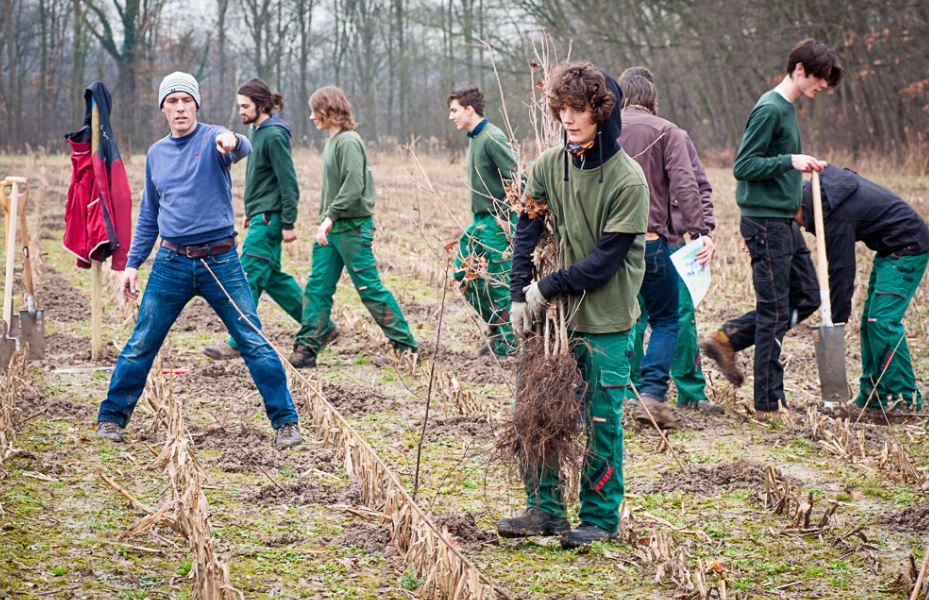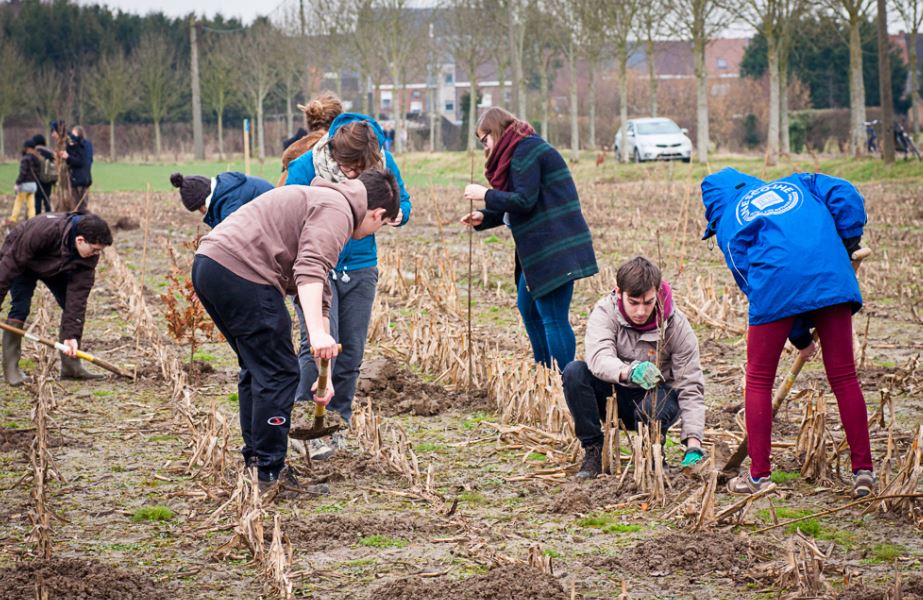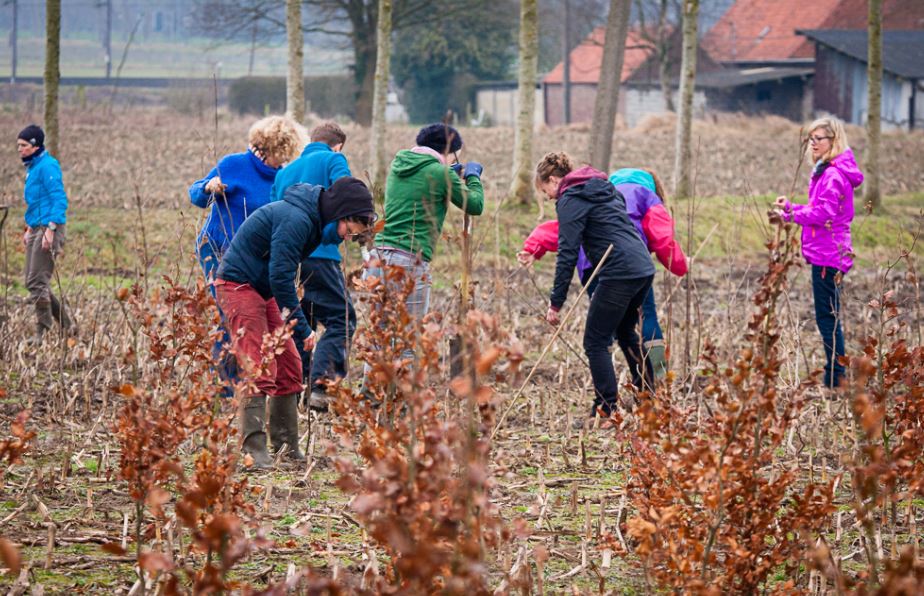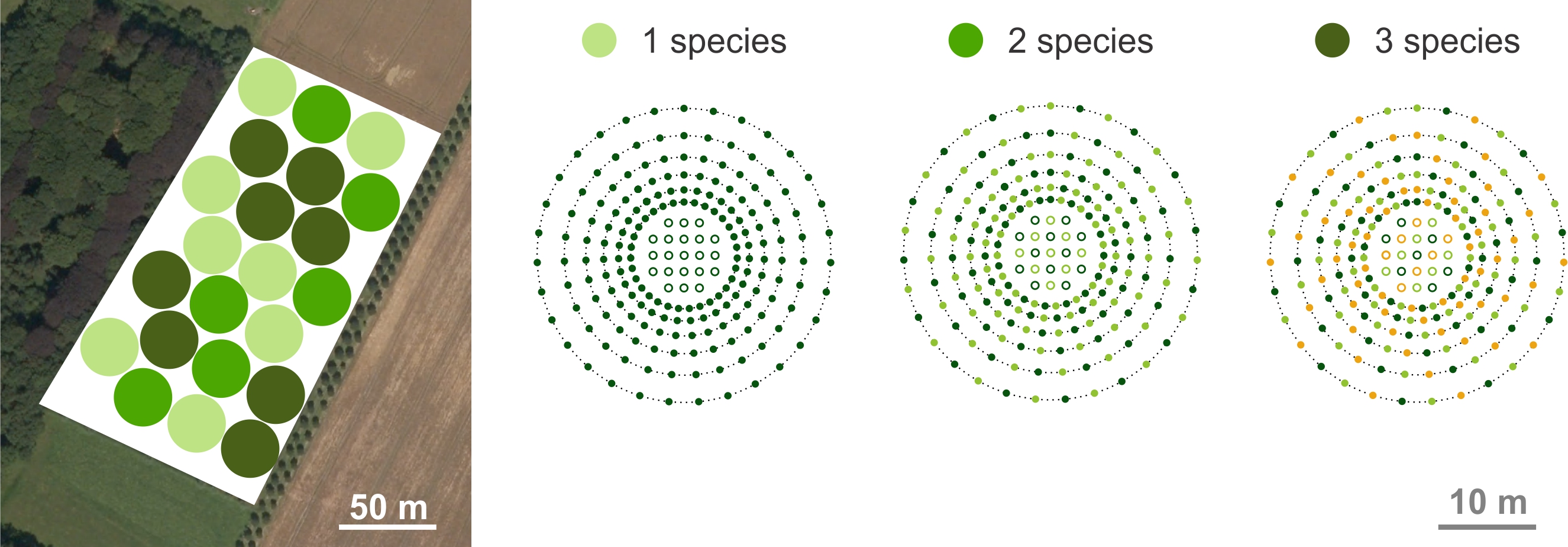TWIG-UGent
The acronym TWIG stands for Tree Wheels In Geerbos. This ‘climate forest’ (klimaatbos) was planted by Ghent University (UGent) as a symbol for its sustainability ambitions and to sequester a little bit of their CO2 emission. The experiment was established near Geerbos in Melle in 2017. Circular plots were planted with one up to three tree species and from high to low tree density.

|
||

|

|

|
| Planting of the experiment with volunteers in February 2017 (photos: Stephanie Schelfhout) | ||
design
The experiment consists of circular plots that follow the Nelder Wheel design. Trees are planted along concentric circles with increasing radii. Hence, the planting density is higher in the center of the plots than at the plot border. The central area of the wheels is planted as well, but those trees are not part of the Nelder design. The plots are planted with one up to three tree species from a species pool of four species: two associated with ectomycorrhiza (Fagus sylvatica, Quercus robur), two with arbuscular mycorrhiza (Acer pseudoplatanus, Prunus avium). All four monocultures, the six 2-species mixtures, and the four 3-species mixtures are planted.

|
| The tree wheels of the TWIG plantation |
research goals
The main research focus is investigating how tree density affects the diversity effects on tree growth and carbon sequestration.
more info
For more info about the experiment, send an e-mail to the contact person.
The TWIG plantation is part of TreeDivNet.